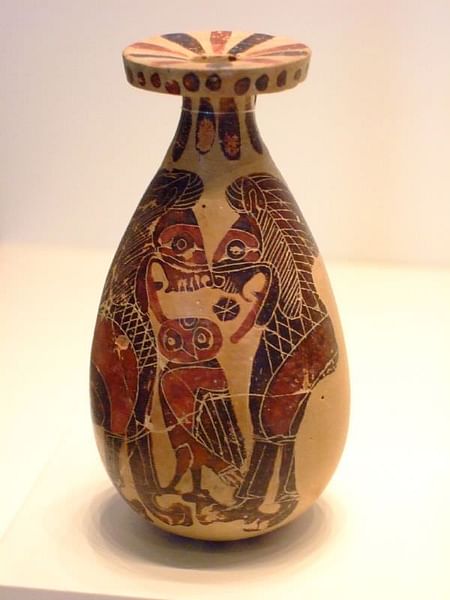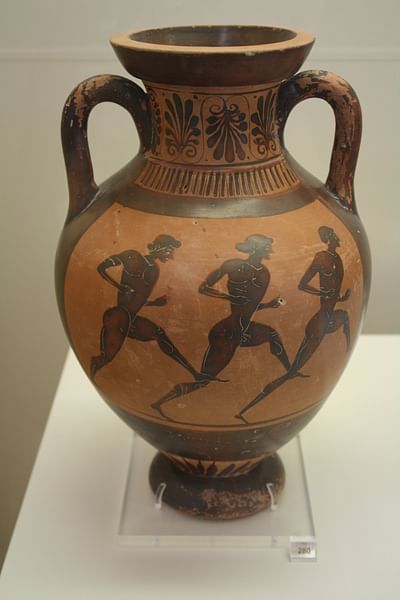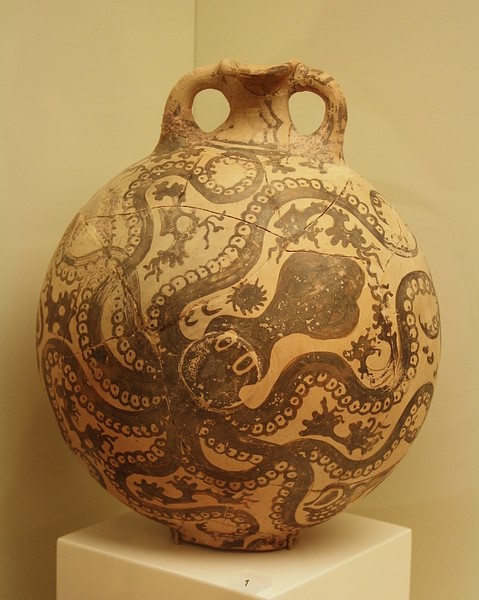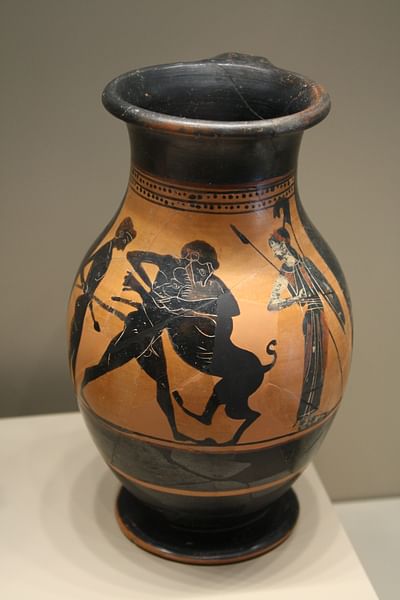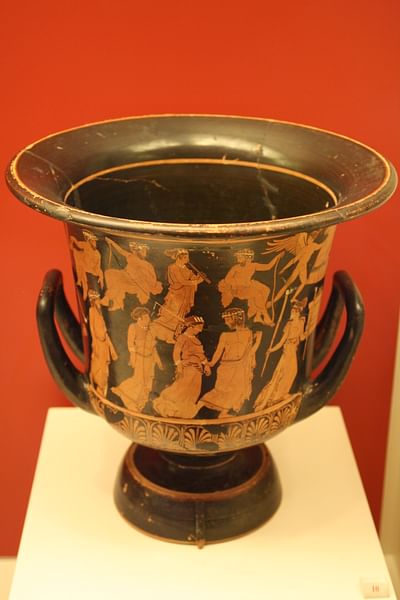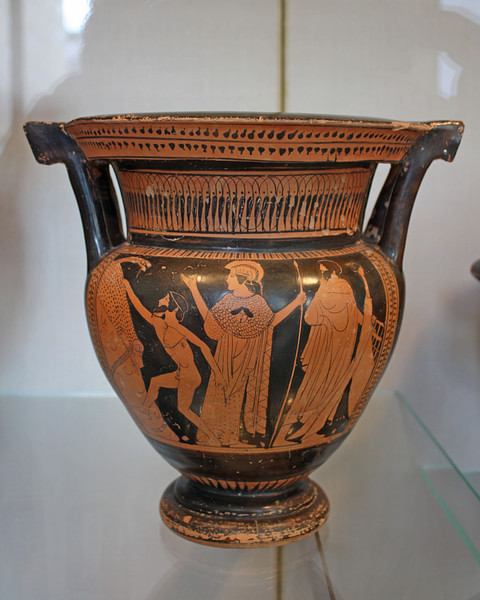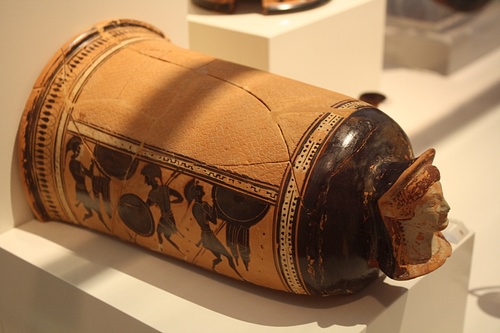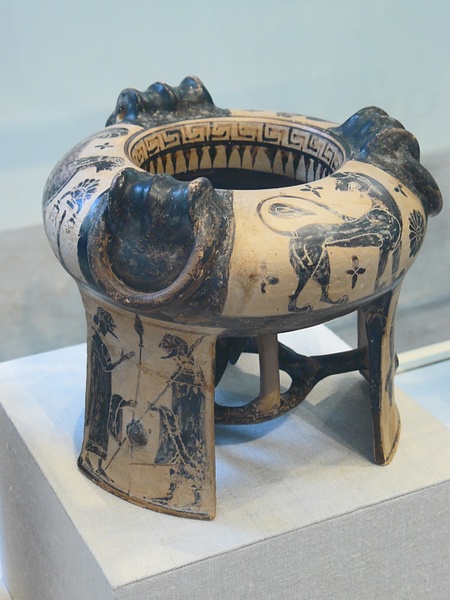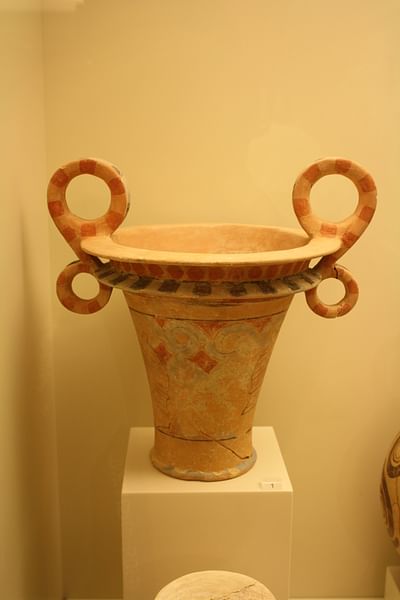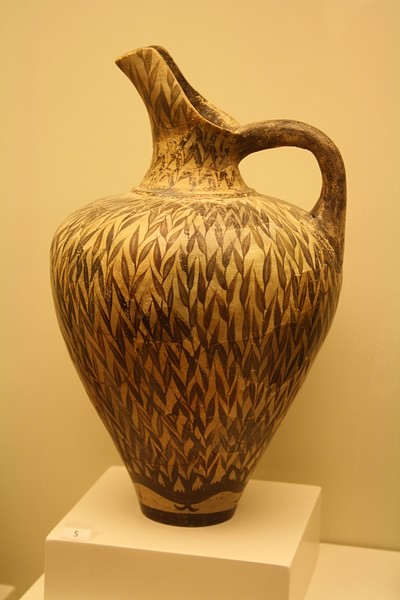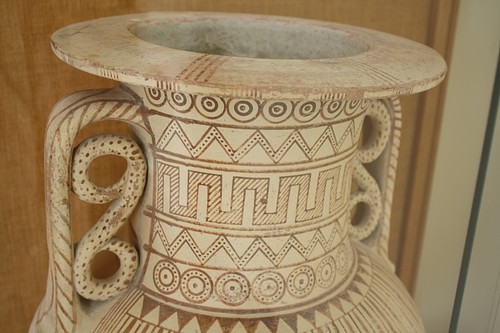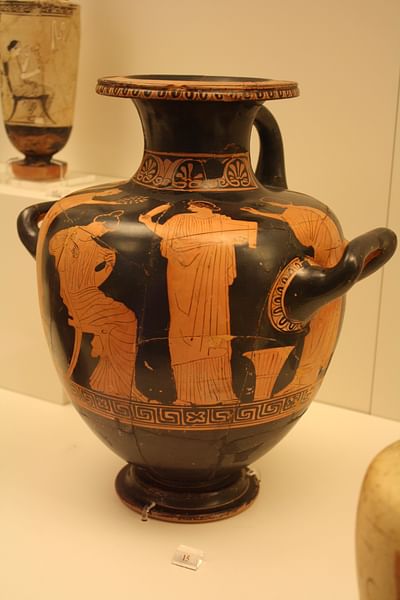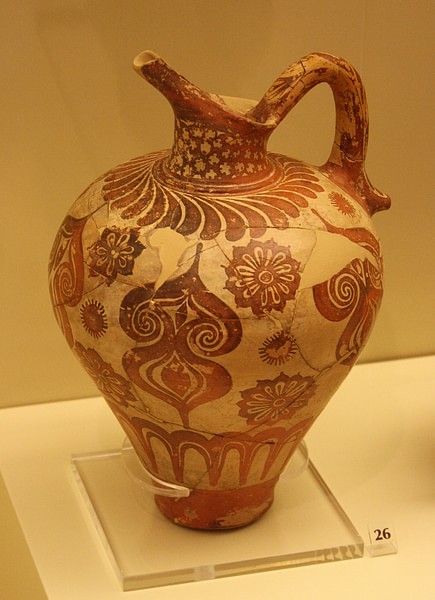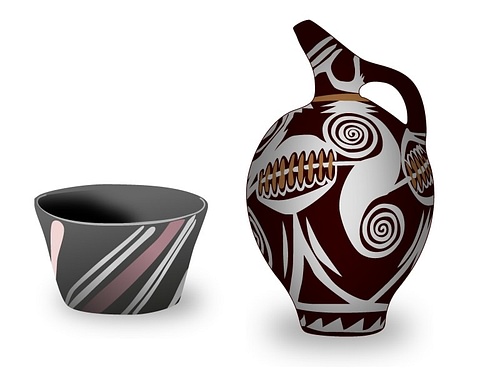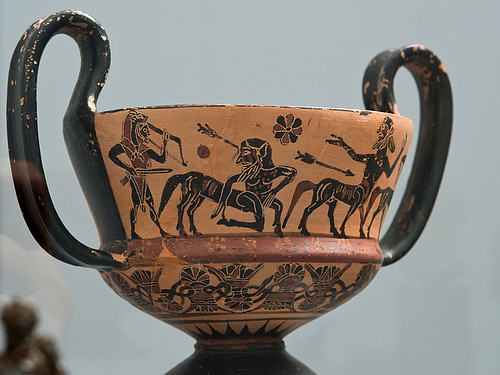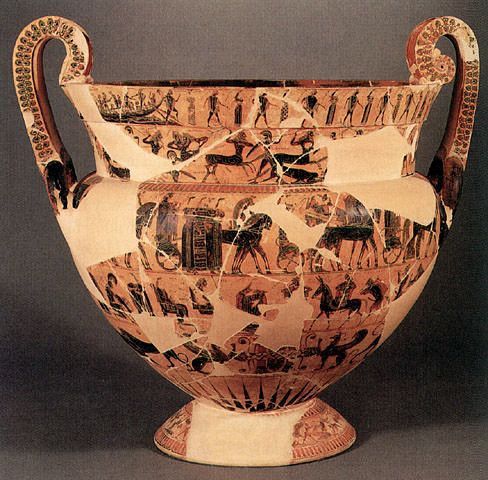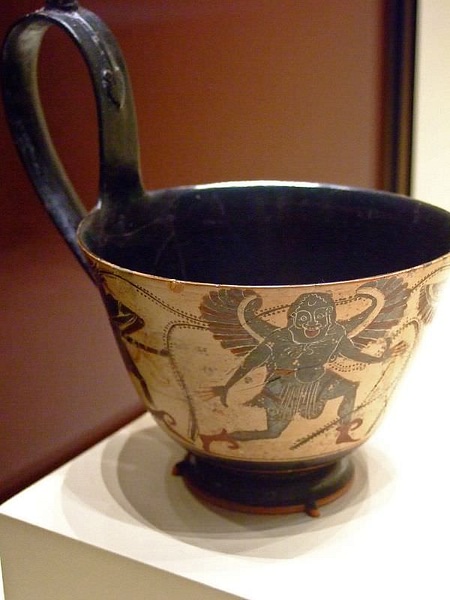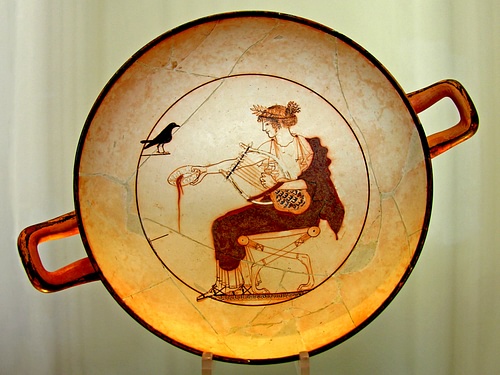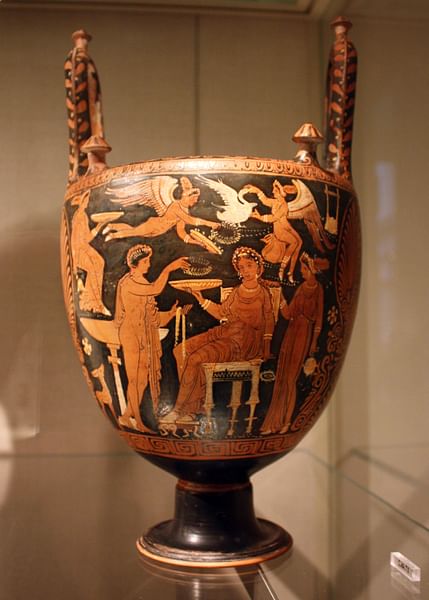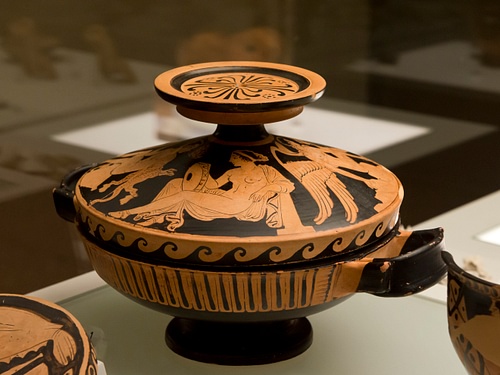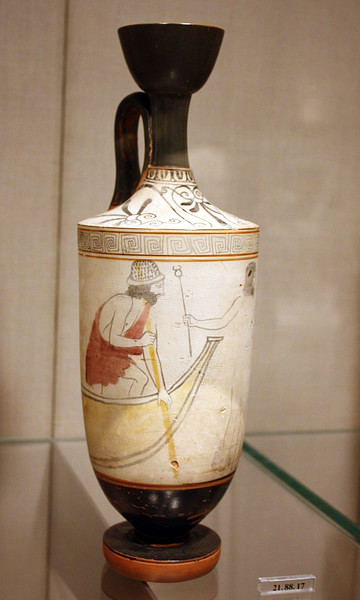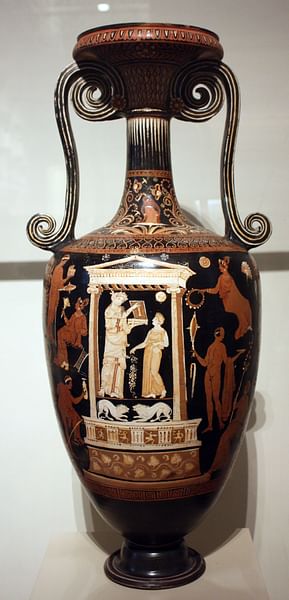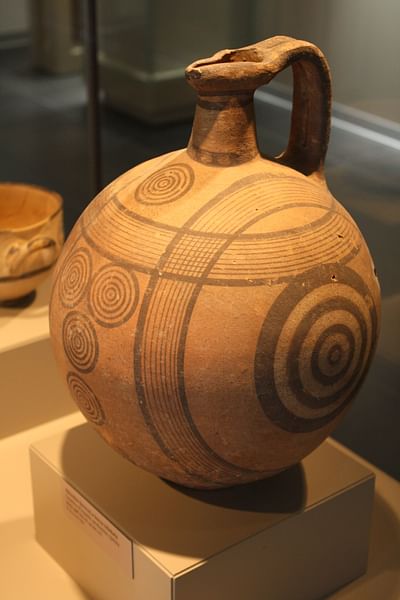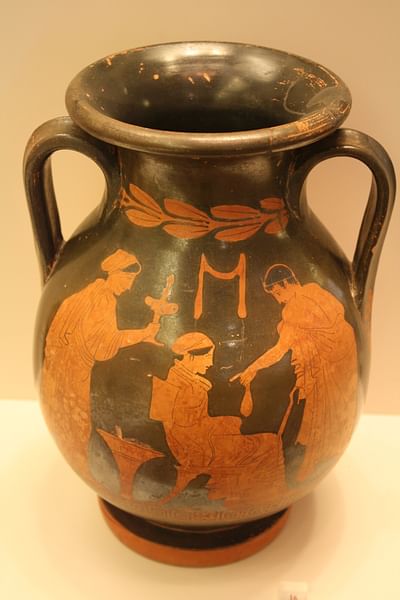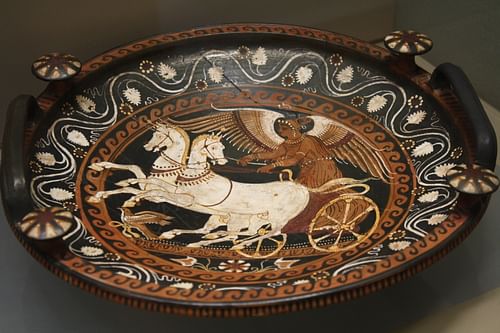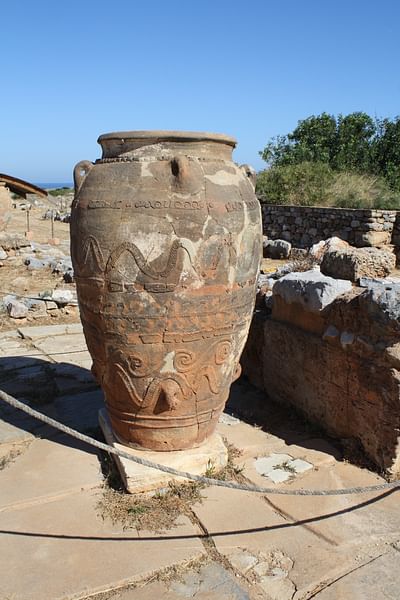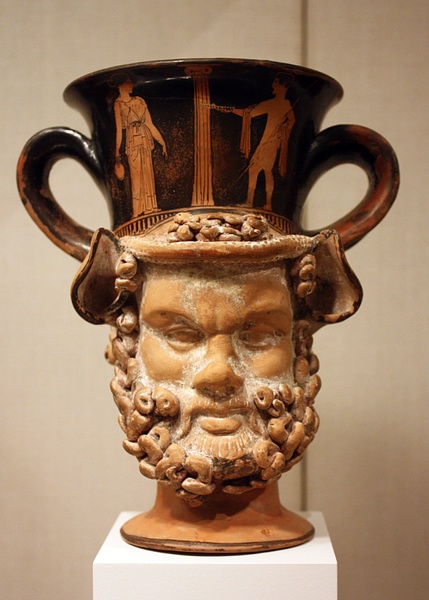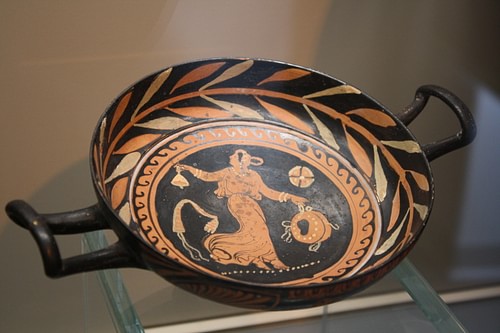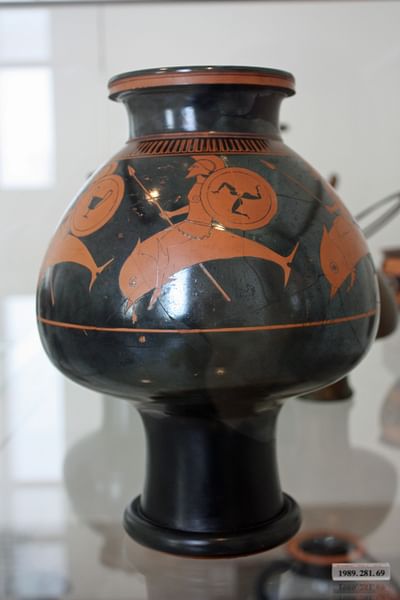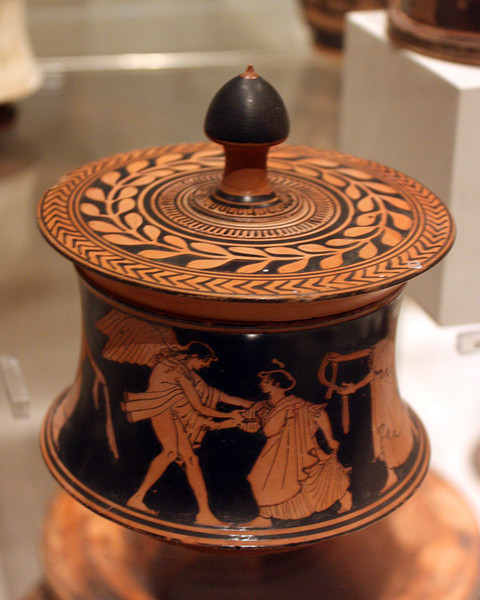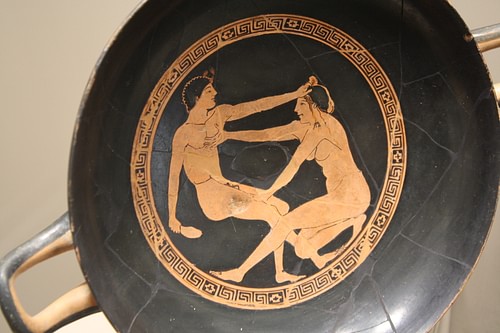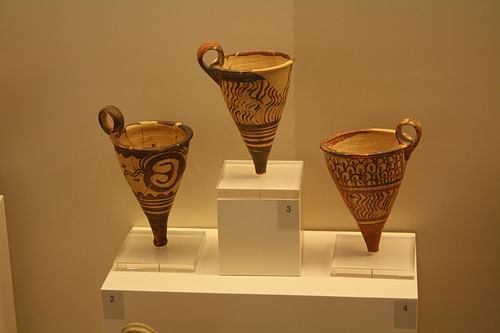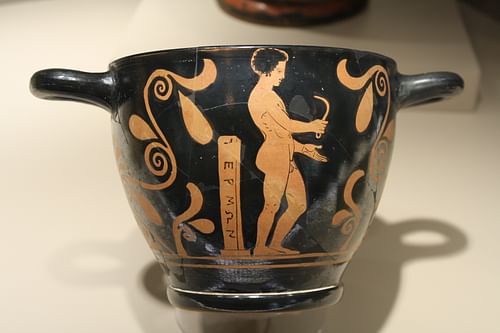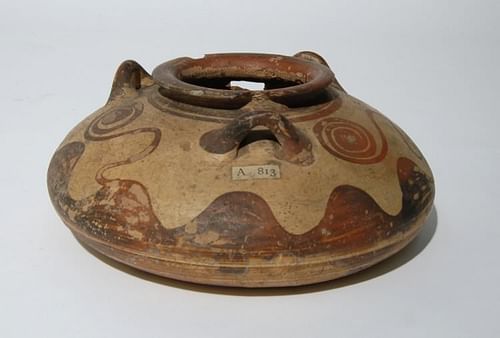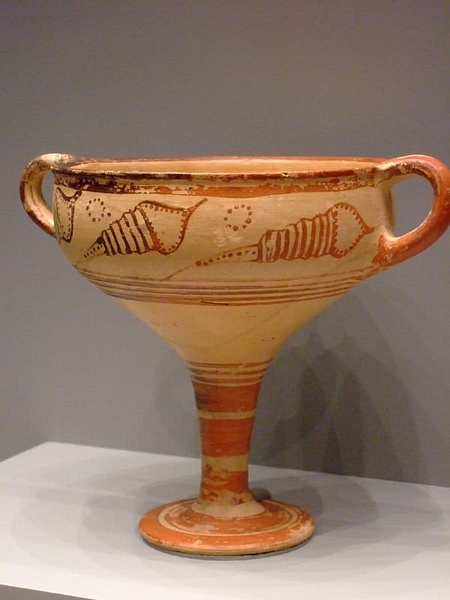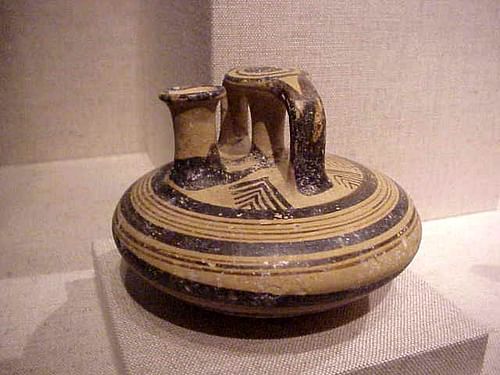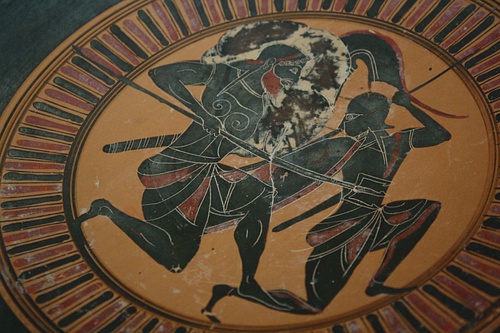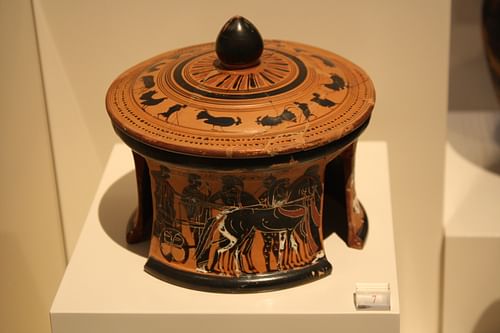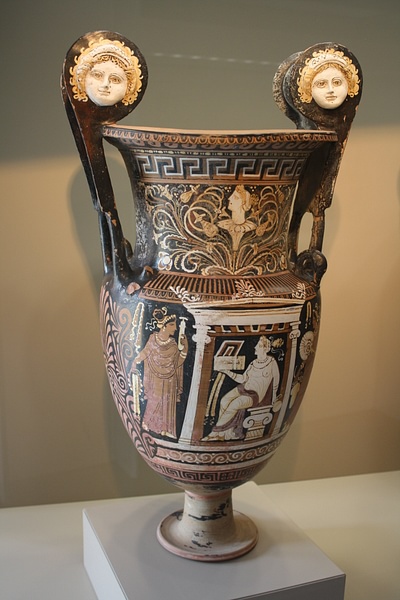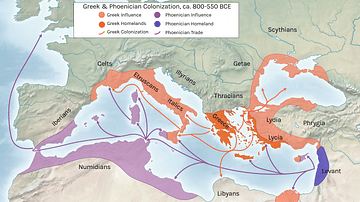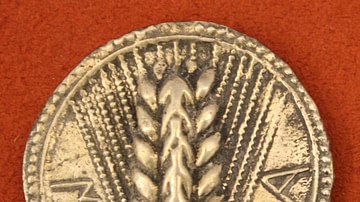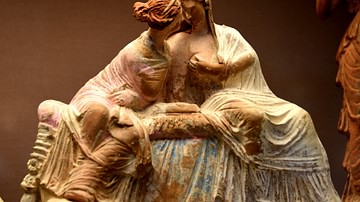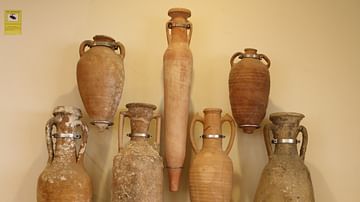Alabastron (pl. alabastra) - a small jar for storing perfumes, named after the material (alabaster) the first examples were made from. They were often carried by a string looped around the neck of the vessel.
Amphora (pl. amphorae) - one of the most common forms in Greek pottery, various shapes, always with two vertical neck-handles and used for storing and transporting oil, wine and foodstuffs such as olives. Often with a lid but these have rarely survived.
Askos (pl. askoi) - named after the wineskin which it resembles in shape. The small neck implies they were used for pouring liquids in a small quantity, e.g.: fine oil, honey and vinegar.
Astragalos (pl. astragaloi) - a vessel shaped like a knucklebone from which it takes its name and which may have been used to store sheep knucklebones which were used as gaming pieces or dice.
Barbotine Ware - a style of pottery with decorative excrescenses.
Bell-Krater - a particular form of the krater vessel with a body shaped like an upside down bell, the handles are placed high on the vessel and the foot is stepped.
Black-Figure Style Decoration (c. 620 - c.530 BCE) Invented in Corinth, the style was adopted in Attica to become the dominant style in Greek pottery. Figures were painted in black silhouette with details such as muscles and hair incised using a sharp instrument.
Calyx Krater - a krater with a body shaped like a flower calyx, usually with a stepped foot.
Column-Krater - a type of krater (wine and water mixer) popular in the black-figure style with each handle supported by a short vertical 'column'.
Dinos (pl. dinoi) - a large round-bottomed bowl with no handles and used for mixing wine with water. Usually placed on a ceramic stand or metal tripod.
Epinetron (pl. epinetra) - a half-cyclinder worn over the thigh with the closed end over the knee, used for preparing wool for weaving. The upper surface was often incised to make a rough surface against which the wool fibres could be rubbed. Often with a female head at the closed end.
Exaleiptron (pl. exaleiptra) - a vessel used to store fine oil or perfume with an inverted lip to prevent spillage and usually lidded. Pottery decoration show them in a context of women bathing or during funerary rites. Also known as a kothon.
Figure-of-eight Vase - named after the distinctive handle shape, from the Minoan civilization.
Fish Plate - a flat dish with a short foot used for serving fish and seafood. A central depression collected excess oil. Produced from the 4th century BCE they were popular in Attica and Magna Graecia. Usually decorated with fish and sealife, fish on Attic dishes were almost always painted with their undersides towards the outer edge whilst those from southern Italy had their undersides towards the centre of the plate.
Floral Style Decoration - a decorative style from Minoan Crete using plant and flower motifs (c. 1600 - 1450 BCE).
Geometric Style Decoration - the use of simple shapes and lines, later with stylized figures of animals and humans (900-600 BCE).
Graffito (pl. graffiti) - A mark incised into the vase (usually under the foot), most commonly letters or numbers but sometimes also words and short phrases. They may indicate prices, trademarks or ownership. Similar marks, but painted, are called dipinto.
Hydria (pl. hydriai) - used principally to store water and one of the commonest shapes in Greek pottery. Two horizontal handles were for carrying the vessel when full and one vertical handle used when pouring. They could also be used as a burial container for children. They were also often made in bronze versions.
Jug - with a spout and single handle, used for pouring liquids.
Kamares Style Decoration - a polychrome decorative style from the Minoan civilization using bold designs in red or white on a black background (c. 2000 - c. 1700 BCE).
Kantharos (pl. kantharoi) - a cup with two large vertical handles and a stemmed foot.
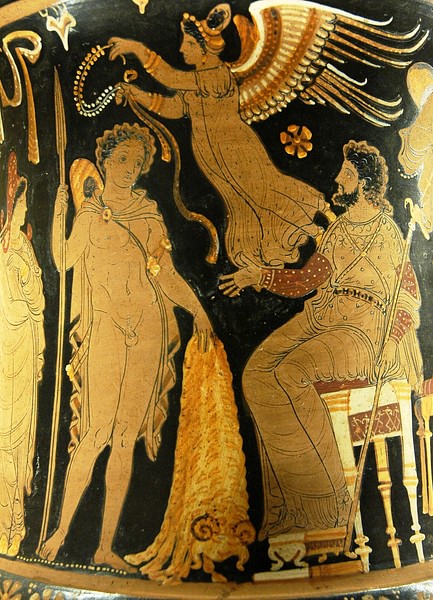
Kerch Style Decoration - named after the palce where many examples have been found they are decorated with distinctive gilded details in low relief. Originally form Athens.
Krater (pl. krateres) - a large vessel with two handles, used to mix water and wine, usually to a ratio of 3:1 or 5:3.
Kyathos (pl. kyathoi) - a ladle-like cup used for serving wine.
Kylix (pl. kylikes)- a stemmed cup with two horizontal handles and a stemmed foot, used for drinking wine. One of the most common shapes in Greek pottery, over 30 varieties exist.
Lebes Gamikos (pl. lebetes gamikoi) - a large vase with two upright handles often with a conical stand and lid. Used during marriage and burial ceremonies.
Lekanis (pl. lekanides) - a shallow vessel with a foot and two horizontal handles and often with a single handled lid. The dish was used for storage of small articles (especially for women) and for serving food (when the lid, overturned, became a second serving dish).
Lekythos (pl. lekythoi)- used to store fine oils and perfumes, often dedicated in burials and decorated in reference to this function, often with a white background.
Louterion (pl. louteria) - a large basin vessel with two handles and sometimes a spouted lip. Used for holding water for washing or perhaps mixing wine and water. A third function may have been connected with funerary rites such as washing the body.
Loutrophoros (pl. loutrophoroi) - a tall slim jar with elongated handles, used for holding water used in wedding and funeral rites and as a grave marker, especially when the deceased was unmarried.
Marine Style Decoration - found in Minoan and Mycenaean pottery with the depiction of sea-life, particularly octupuses, argonauts and shellfish (from c. 1600 BCE) .
Mastos (pl. mastoi) - a wine cup shaped like a female breast with a nipple at the base instead of a foot.
Neck-Amphora - an amphora where the neck joins the shoulder of the vessel at a sharp angle.
New Palace Style Decoration - the late Minoan decorative style using more stylisitc representations of plants and marine life (from 1450 BCE).
Oinochoe (pl. oinochoai) - jug or pitcher for pouring liquids, principally wine.
Ornament - decorative patterns and floral designs added to the foot, rim, handles and borders of vessels. Lotus, palmettes, ivy, meander, rays, tongues and rosettes were the most popular.
Pelike (pl. pelikai) - a jar used for storing liquids such as oils and wines. Also used to contain ashes after cremation.
Phiale (pl. phialai) - a shallow bowl used for wine and pouring libations in religious ceremonies. Often with an upraised knob in the centre which gives the vessel its name - omphalos (naval).
Pinax (pl. pinakes) - a decorative plaque affixed to walls in tombs and temples.
Pithos (pl. pithoi) - from the Minoan civilization, a large jar for the storage of foodstuffs such as grain and olives. Large magazines of pithoi are a typical feature of Minoan palace complexes.
Plastic Vase - A vase which incorporates a small sculpture as part of the vessel.
Plate - a circular flat dish with a raised rim.
Proto-Geometric Style Decoration - with simple shapes such as spirals and solid black lines, a pre-cursor of the more ambitious Geometric Style (c. 1000 - 900 BCE).
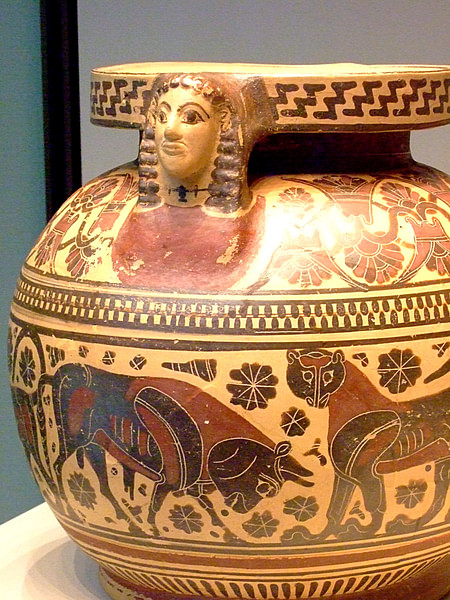
Protome (pl. protomai or protomes) - three dimensional moulds added to vessels, especially handles. Often in the form of animals or the human upper body.
Psykter (pl. psykters or psykteres) - a large vase shaped like a mushroom and used to cool wine. They could be placed within a krater or stand alone.
Pyxis (pl. pyxides) - a small circular box with a lid, often used for the storage of jewellery and toileteries.
Red-Figure Style Decoration (from c. 530 BCE) Replacing the earlier black-figure style, vessels were painted black to leave unpainted figures the red colour of the original clay. Details were then added to the figures using a fine brush. Much greater attempts were made at realism and perspective in this style.
Rhyton (pl. rhyta) - used in relgious practices for the pouring of libations, they may also take the shape of animal heads, especially bulls.
Skyphos (pl. skyphoi) - deep cup or bowl with two handles near the rim.
Squat Alabastron - a flat jar for storing creams and ungents, first appearing in Minoan Crete and popular in the Mycenaean period. Early examples were made from alabaster, hence the name.
Stamnos (pl. stamnoi) - a jar with a wide mouth, often with a lid and two handles, used for mixing wine and water.
Stemmed Cup - a drinking cup with two handles, a stem and base. Popular in the Mycenaean civilization, they would later develop into the unbiquitous kylix.
Stirrup Jar - first appearing on Minoan Crete but the most common shape in Mycenaean pottery, with a false central spout, used to store wine and oils.
Tondo (pl. tondi) - the picture enclosed in a circle found on the inside of a kylix or plate.
Tripod Pyxis (pl. pyxides) - A pyxis with three concave legs, also called a tripod-kothon.
Vasiliki Style Decoration - the first distinctive Minoan style of pottery decoration using mottled red and black colours (c. 2600-2000 BCE). Named after the site where the first examples were excavated.
Volute-Krater - a krater where the tops of the handles have a volute or scroll. More commonly decorated in the red-figure style.
